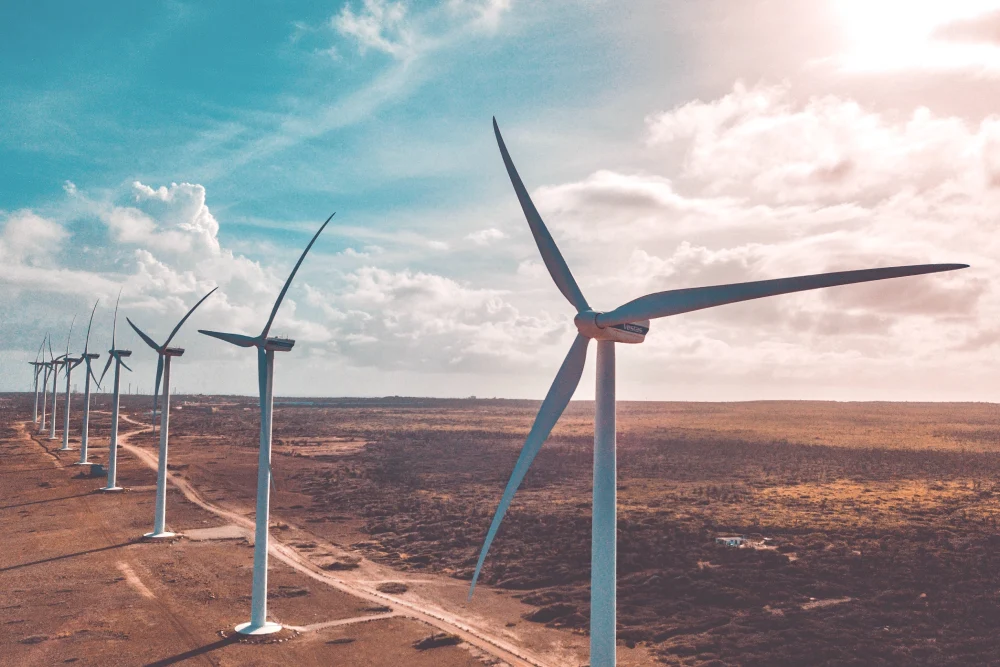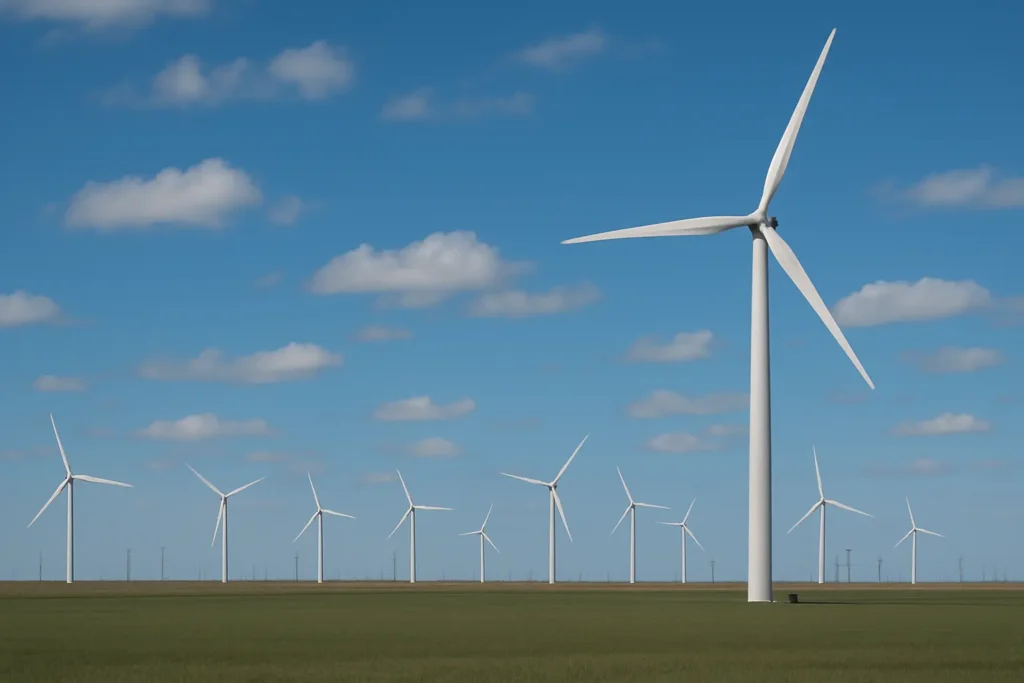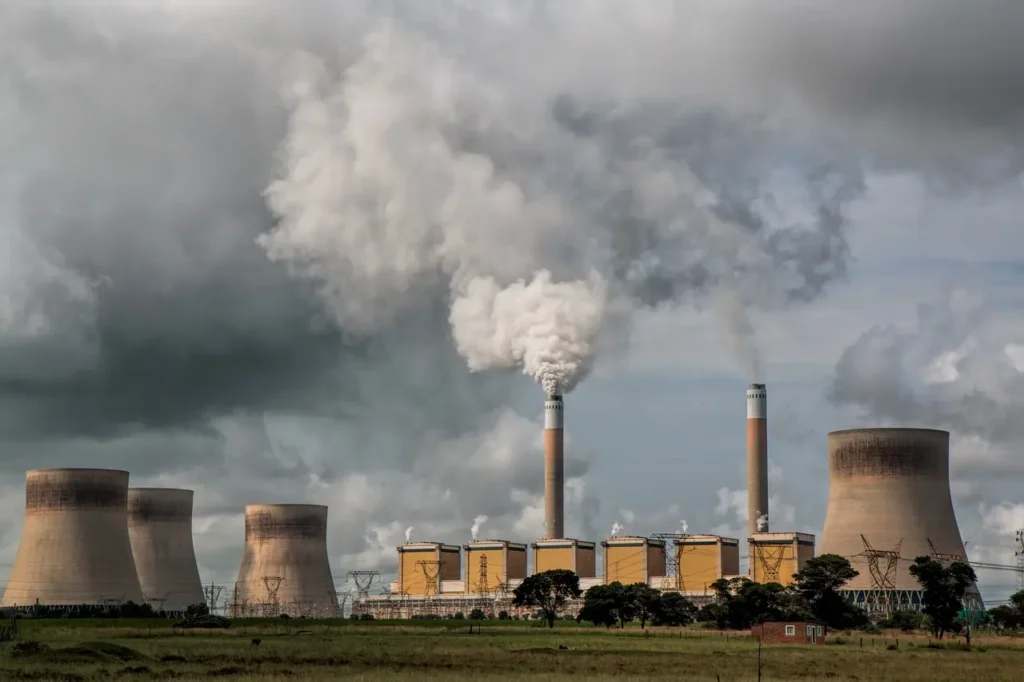The Largest Wind Farms in Texas
5 minute readDiscover how Texas dominates U.S. wind power with massive utility-scale projects.
Home > Learning Center > Energy Production > Types of Wind Turbines Explained
2 minute read • Last update November 2023

There are two primary types of wind turbines: vertical axis (VAWT) and horizontal axis (HAWT).
Wind energy has become a critical player in the global transition to cleaner and more sustainable sources of electricity. Wind turbines are at the heart of this transformation, converting the kinetic energy of moving air into electrical power. In this blog, we will explore the key differences between these two designs and address important questions regarding their popularity, energy efficiency, and cost-effectiveness.
Horizontal axis wind turbines, often referred to as HAWTs, are the most common type of wind turbines in use today. They have a design similar to that of a traditional three-bladed propeller, with the rotor shaft oriented horizontally.
HAWTs are more popular and widely deployed compared to their vertical axis counterparts. The familiar image of towering wind turbines with spinning blades you see on wind farms is predominantly that of HAWTs.
HAWTs tend to be more energy-efficient than vertical axis wind turbines. They can capture and convert wind energy more effectively due to their aerodynamic design. As the wind flows across the blades, they harness a greater portion of the wind’s kinetic energy, making them more efficient in generating electricity.
HAWTs have been in use for several decades, resulting in a mature and competitive industry. The well-established manufacturing processes and economies of scale have contributed to making HAWTs a more cost-effective choice, both in terms of initial investment and maintenance.
Vertical axis wind turbines, or VAWTs, differ from HAWTs in that their rotor shaft is oriented vertically. There are various designs of VAWTs, including the Darrieus and Savonius types.
VAWTs have not gained as much popularity as HAWTs. They are less commonly seen in large-scale wind farms, but they find niche applications in specific situations, such as urban environments with less space or regions with lower wind speeds.
VAWTs are generally less efficient than HAWTs. They have a lower capacity factor, which means they capture less energy from the wind. The main reason for this is that VAWTs are less aerodynamically efficient and experience more turbulence as the wind flows around their vertical blades.
VAWTs can be more cost-effective in certain scenarios. Their simpler design makes them easier and cheaper to manufacture and maintain. They may also be better suited for low-wind-speed areas where the lower efficiency is offset by their lower cost.
Graham Lumley, Digital Marketing Manager at BKV Energy, leads digital and traditional marketing strategies, focusing on educating Texans about the state's deregulated energy market. With over 8 years of marketing experience, he creates content to help consumers understand and save on their energy bills, bringing a fresh and dynamic approach to the industry.

Discover how Texas dominates U.S. wind power with massive utility-scale projects.

Get $50 off your electric bill!
Use code BKVEJOINUS50
Enter your zip code to shop BKV Energy's affordable, fixed-rate Texas electricity plans. Use the promo code for $50 off your electric bill.